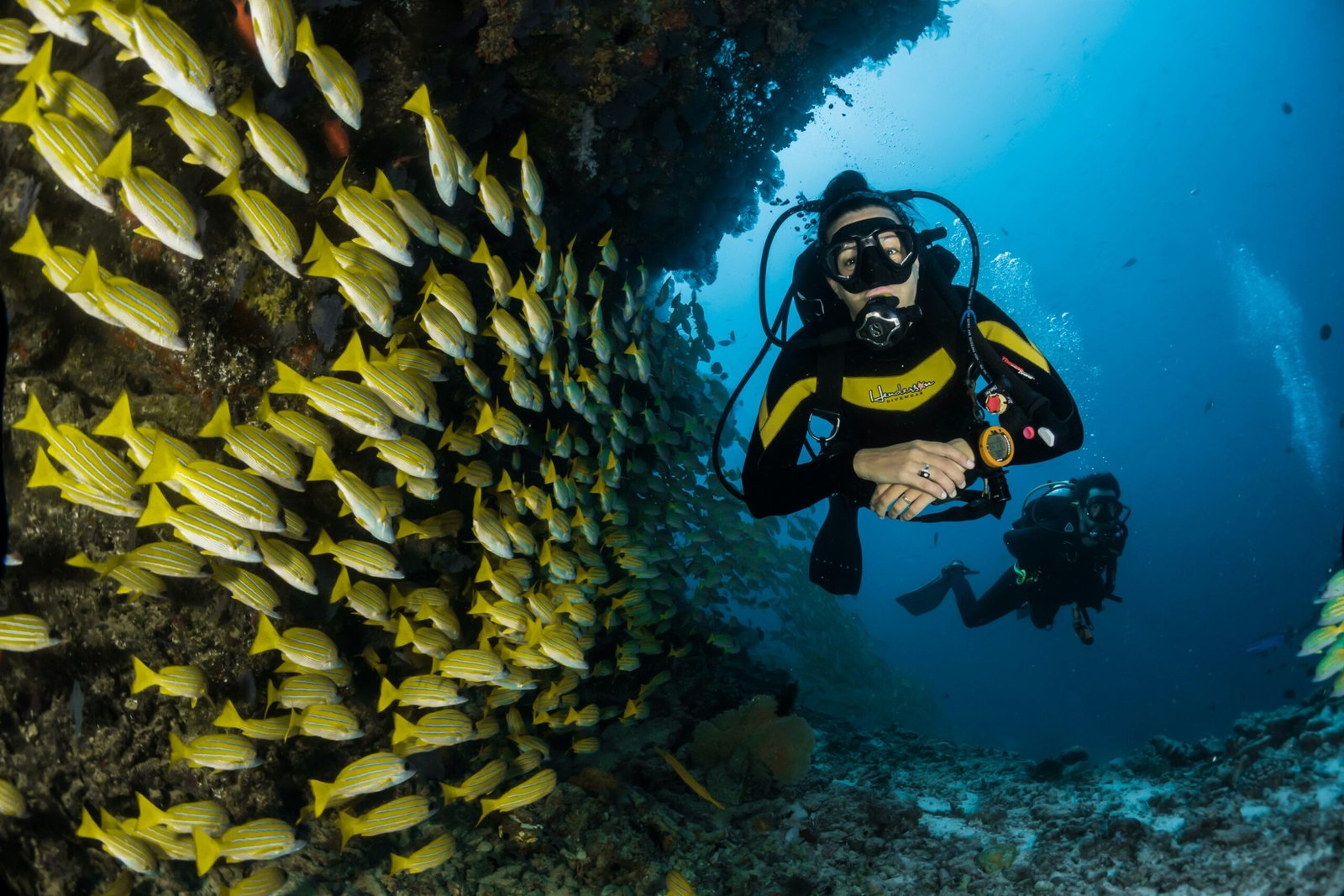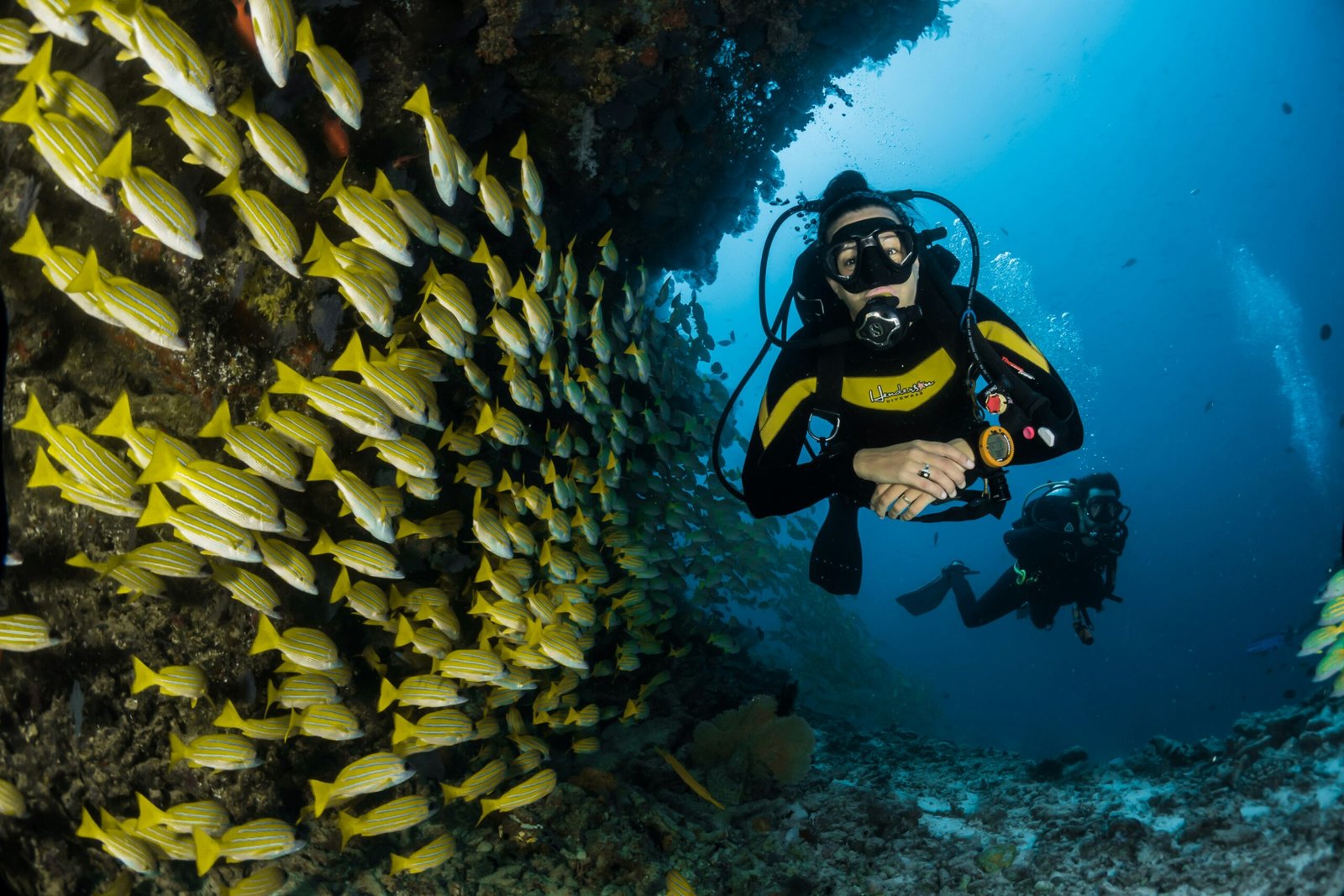
Introduction to East Timor’s Marine Ecosystem
Located in Southeast Asia, East Timor, or Timor-Leste, is an island nation situated at the eastern end of the island of Timor. Bordered by the Timor Sea to the south and the Banda Sea to the north, East Timor encompasses a pristine landscape that is not only rich in cultural heritage but also boasts one of the most diverse marine ecosystems in the world. As part of the Coral Triangle, a region renowned for its extraordinary marine biodiversity, East Timor plays a crucial role in the conservation of coral reefs and marine life.
The Coral Triangle, which includes East Timor, Indonesia, Malaysia, Papua New Guinea, the Philippines, and Solomon Islands, is recognized globally for its high concentrations of coral species and fish populations. This underwater paradise hosts an estimated 600 species of coral, which provide habitat for a variety of marine organisms. East Timor’s coastal waters exhibit remarkable health and vibrancy, making them an attractive destination for divers and marine enthusiasts alike. Additionally, the country’s diverse marine ecosystems support vital fisheries, contributing crucially to the local economy and the livelihood of its communities.
In East Timor, the waters are teeming with life, ranging from vibrant coral gardens to thriving schools of tropical fish, including various endemic species unique to the region. Combined with stunning underwater topographies, such as underwater cliffs, caves, and wrecks, the diving experiences in East Timor are truly exceptional. The marine life also includes larger species like manta rays, turtles, and dolphins, further enhancing the allure of this diving destination. As we delve into the specific diving sites, understanding East Timor’s unique marine ecosystem helps to highlight the ecological significance of its coral reefs and the importance of their preservation.
Overview of Coral Reefs in East Timor
East Timor, situated in the Coral Triangle, is renowned for its impressive coral reefs and rich marine biodiversity. The country hosts a diverse array of coral reef types, including fringing reefs, barrier reefs, and patch reefs. Fringing reefs are notably found along the coastlines, directly adjacent to the land, and are characterized by their proximity to the shore. These reefs form in shallow waters where sunlight penetrates, allowing photosynthetic organisms, such as zooxanthellae, to thrive within the coral polyps. Consequently, fringing reefs are vital for coastal protection and are essential habitats for various aquatic species.
Barrier reefs, while less common in East Timor, can also be found off its coast. These reefs are situated farther from the shore and are separated from the land by deeper waters, creating lagoons that serve as important nursery areas for juvenile marine organisms. The well-developed ecosystems within these barrier structures support a higher diversity of marine life, ranging from fish to invertebrates. Patch reefs, on the other hand, are smaller, isolated formations located within larger bodies of water and contribute significantly to the overall biodiversity of the region.
The formation of coral reefs in East Timor is a result of complex biological and geological processes. Coral polyps, the building blocks of these reefs, secrete calcium carbonate, which accumulates over time and forms the reef structures. In addition to providing habitat for marine life, coral reefs play a crucial role in maintaining marine biodiversity. They serve as breeding grounds, feeding areas, and protective environments for countless species, making them indispensable to the health of the ocean ecosystem.
Overall, the coral reefs of East Timor illustrate the extraordinary beauty and diversity of marine habitats. Their presence not only enriches the environment but also underscores the need for conservation efforts to protect these vital ecosystems from threats such as climate change, pollution, and overfishing.
Biodiversity: The Rich Marine Life of East Timor
East Timor, nestled in the heart of the Coral Triangle, boasts an extraordinary array of marine biodiversity that attracts researchers, divers, and ocean enthusiasts alike. The waters surrounding this Southeast Asian nation are home to over 1,200 species of fish, including reef dwellers such as clownfish, wrasses, and parrotfish. These vibrant inhabitants contribute to the ecological balance within the coral reef systems, which serve as critical habitats for countless marine organisms.
Mollusks add another layer to East Timor’s underwater ecosystem, with various species of snails, clams, and octopuses inhabiting the seabed. Among these, the cone snail and the giant clams are particularly noteworthy, both for their ecological roles and their striking appearances. The diverse shapes and colors of these mollusks serve not only to attract potential mates but also to offer camouflage against predators, illustrating nature’s ingenuity in marine adaptation.
Crustaceans, such as shrimp and crabs, further enrich the marine life in East Timor’s waters. These creatures play crucial roles as both predators and prey and are integral to the food web. East Timor’s coral reefs are also a haven for numerous species of marine mammals, including dolphins and whales, which occasionally migrate through these waters, contributing to the region’s ecological diversity.
The interaction of these various species within East Timor’s unique marine ecosystems is vital for maintaining overall biodiversity. It is essential to recognize the importance of conservation efforts to protect these habitats from threats such as climate change, overfishing, and pollution. By safeguarding East Timor’s rich marine life, we can ensure the continuation of its vibrant underwater world for generations to come.
Best Diving Spots in East Timor
East Timor, known for its breathtaking coral reefs and diverse marine ecosystems, presents numerous compelling diving locations that cater to both novice and experienced divers. One of the most popular spots is the famous dive site at Tulamben, located on the northern coast. This site features the USAT Liberty shipwreck, which rests at a depth of between 5 to 30 meters. The wreck is home to an array of marine life, including vibrant reef fish and sea turtles, making it a perfect exploration target for underwater photographers.
Another noteworthy destination is the vibrant coral gardens of Atauro Island. Accessible by boat, this area offers an array of diving experiences, with depths ranging from 5 to 40 meters. Divers can expect to encounter an impressive array of biodiversity, including colorful nudibranchs, exotic reef fish, and even the occasional manta ray. The crystal-clear waters enhance visibility, allowing divers to fully appreciate the stunning underwater landscapes.
For those seeking deeper dives, the underwater slopes at Cristo Rei near Dili are a must-visit. This dive site, featuring depths of up to 50 meters, showcases a mesmerizing underwater statue of Christ. With its diverse habitats, divers can encounter everything from small juvenile fish to larger pelagic species, providing a thrilling contrast in the marine ecosystem. The currents can occasionally be strong, making it more suitable for experienced divers.
Additionally, the Blue Corner in the Nusa Tenggara region is famed for its thrilling drift dives. With depths of 15 to 30 meters, divers can witness a rich tapestry of marine organisms, including schools of barracuda and various species of sharks. This dive spot is also accessible from shore or via boat, making it a convenient choice for those looking to experience the best of East Timor’s underwater wonders.
These exemplary diving spots in East Timor not only highlight the region’s unparalleled marine beauty but also present an array of opportunities for adventurers to deepen their understanding of marine conservation while enjoying unforgettable dives.
Importance of Marine Conservation in East Timor
The marine ecosystems of East Timor are renowned for their rich biodiversity, characterized by vibrant coral reefs and a plethora of marine species. However, these precious environments face significant threats that jeopardize their health and sustainability. Understanding the pressing issues surrounding marine conservation in East Timor is crucial for both intrinsic and extrinsic reasons. Pollution, overfishing, and the impacts of climate change have emerged as major contributors to the degradation of these underwater habitats.
Pollution, particularly from coastal development and inadequate waste management, has detrimental effects on marine life. Coastal areas in East Timor are increasingly affected by plastic debris and chemical runoff, severely compromising water quality and the overall health of aquatic ecosystems. These pollutants can lead to coral bleaching and decline in fish populations, undermining the delicate balance necessary for maintaining biodiversity.
Overfishing is another prominent issue in East Timor, where unsustainable fishing practices threaten the viability of fish stocks and disrupt the food chain. The demand for seafood has led to excessive harvesting of certain species, pushing them to the brink of extinction. It is essential to adopt sustainable fishing techniques and establish marine protected areas to ensure that fish populations can recover and thrive.
Climate change poses a significant additional risk, with rising sea temperatures resulting in coral bleaching and habitat loss. The fragile corals of East Timor are particularly susceptible to these temperature changes, making their conservation urgent. Diver communities are uniquely positioned to play a role in marine conservation, as they can actively engage in sustainable diving practices that minimize their impact on fragile ecosystems.
Moreover, by participating in awareness campaigns and supporting local conservation initiatives, divers contribute to the preservation of East Timor’s exceptional marine life. The importance of marine conservation in this region cannot be overstated, as the health of these ecosystems directly influences local communities and economies that rely on marine resources for their livelihoods.
Local Culture and Community Involvement
The relationship between the local communities of East Timor and the ocean is deeply rooted in both tradition and practical necessity. The coastal populations have long depended on the sea for their livelihoods, engaging in various fishing practices that have been passed down through generations. Traditional fishing methods, such as hand-catching and the use of nets, not only provide sustenance but also embody cultural values and techniques that highlight their respect for marine resources. These practices ensure the sustainability of fish populations while reinforcing community bonds, as fishing is often a collective activity that fosters cooperation among community members.
In addition to fishing, the cultural beliefs surrounding the ocean play a significant role in shaping the identity of the communities. Many local legends reverberate through the tales shared among families, emphasizing the spiritual connection that East Timorese people have with the sea. This connection is evident in various ceremonies and rituals, where the sea is revered not only as a source of life but also as a symbol of protection and abundance. Such cultural practices promote an awareness of environmental stewardship, encouraging communities to care for the marine ecosystem that sustains them.
With the growth of ecotourism, there exists a golden opportunity for local economies to benefit economically while preserving their cultural heritage. Responsible tourism initiatives that focus on marine life conservation can integrate traditional knowledge and cultural narratives into visitor experiences. This approach not only provides a source of income for community members but also educates tourists about the rich cultural tapestry of East Timor’s coastal populations. By fostering a symbiotic relationship between tourism and traditional practices, East Timor can pave the way for sustainable development that honors and protects both the ocean and the unique cultural heritage of its people.
Dive Tourism: Economic Impact and Opportunities
Dive tourism has emerged as a significant contributor to the economy of East Timor, presenting both immediate and long-term benefits to the region. Known for its stunning coral reefs and diverse marine life, East Timor attracts divers from around the globe, capitalizing on the paradise-like conditions for underwater exploration. The growth of this niche tourism segment not only provides a substantial boost to local businesses but also generates employment opportunities within various sectors.
According to recent statistics, dive tourism in East Timor has shown an impressive annual growth rate of approximately 10%, with projections suggesting that the sector could attract over 60,000 international divers by 2025. This burgeoning interest in underwater experiences is expected to foster the establishment of dive shops, equipment rental services, and guided tour operations, subsequently leading to increased job creation within these industries. The potential for economic enhancement is further augmented by the fact that dive tourism often encourages longer stays, as tourists tend to spend more time in locations that offer rich marine biodiversity.
The economic impact of dive tourism extends beyond direct revenue generation; it also promotes sustainable practices. Local communities are incentivized to engage in the preservation of marine ecosystems, fostering a sense of stewardship among residents. Efforts to protect coral reefs and marine habitats can be supported through initiatives funded by tourism revenues, leading to sustainable environmental practices that benefit both the economy and the ecosystem.
Moreover, divers typically invest in accommodations, dining, transport, and other local services, creating a multiplier effect within the economy. As such, increasing awareness and promotion of East Timor as a prime dive tourism destination can further solidify its position within the global tourism landscape, ultimately benefiting both the local populace and the nation’s economic framework.
Planning Your Diving Trip to East Timor
Planning a diving trip to East Timor can be an exhilarating experience due to its rich marine biodiversity and stunning coral reefs. To make the most of your visit, it is crucial to consider several factors that will ensure a safe and enjoyable diving experience. One of the first steps is to determine the best time to visit. The dry season, which typically lasts from May to November, offers calmer seas and better visibility, making it ideal for underwater exploration. During this period, marine life is abundant, and temperatures are comfortable, ranging from 25°C to 30°C.
When preparing for your diving adventure, packing the right gear is essential. While many diving schools provide equipment for rent, it is advisable to bring personal items such as your diving mask, snorkel, and wetsuit for comfort and fit. Additionally, a safety kit that includes a first-aid kit, underwater camera, and essential medications can prove useful during your trip.
Before diving, ensure you possess the necessary certifications. Most dive sites in East Timor require at least an Open Water Diver certification from a recognized organization like PADI or SSI. For those seeking to explore more advanced sites, consider obtaining an Advanced Diver certification. It is also prudent to participate in a briefing session with your diving school to familiarize yourself with local regulations, dive equipment, and safety protocols.
When selecting a diving school, look for establishments with positive reviews, experienced instructors, and a strong commitment to safety. Some recommended diving centers in East Timor include Dive Timor, Blue Water Dive Resort, and Timor Dive. These centers not only provide diving services but also offer guided tours, which can enhance your overall experience. Equipping yourself with this knowledge will ensure a memorable diving experience, surrounded by the breathtaking underwater life that East Timor has to offer.
Conclusion: Embracing the Diving Experience in East Timor
East Timor presents a unique diving experience that is hard to match anywhere else in the world. With its pristine coral reefs and diverse marine life, this destination captivates the hearts of divers and nature enthusiasts alike. The coral reefs here are not only stunning but also serve as crucial ecosystems that support a variety of aquatic species. From vibrant fish populations to rare invertebrates, each dive offers the opportunity to witness the spectacular beauty of underwater life that thrives in these waters.
Moreover, the warm and crystal-clear waters of East Timor create ideal conditions for divers of all skill levels, inviting them to explore the underwater realms teeming with life. The rich marine biodiversity found here, including species that are endemic to the region, underscores the importance of East Timor’s environment. Each dive reveals a new aspect of this underwater paradise, fostering a sense of discovery that many divers find irresistible.
It is essential to emphasize the need for conservation during your diving adventures in East Timor. By practicing responsible diving techniques, such as avoiding contact with coral and being mindful of marine habitats, divers can help protect this stunning ecosystem for future generations to enjoy. Supporting local conservation efforts plays a significant role in ensuring a sustainable future for the region’s precious marine life.
In conclusion, we invite all divers to experience the unparalleled charm of East Timor’s waters. The vibrant coral reefs and magnificent marine life await those who seek adventure in an untouched paradise. By embracing the beauty and promoting conservation, divers can contribute to preserving this underwater haven, ensuring that its wonders continue to inspire awe and admiration for years to come.

